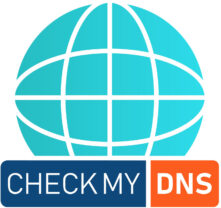DNS is the address book of the internet and converts website names into IP addresses. In general, DNS is transparent and invisible to users. However, in some cases, it simply errors out, which could make a website unresponsive and affect user experience. Top 5 Common DNS Errors and how to correct them may save you precious time reduce downtime and improve the reliability of sites. Here are the top five DNS errors and practical solutions for each.
1. DNS Server Not Responding
Description: “DNS Server Not Responding” is one of the most common DNS errors. This error occurs when the user’s device cannot connect to a DNS server, and therefore no website can be accessed. The problem may be with network settings, DNS servers, or router.
Solution:
Check Internet Connection: Ensure that the device is connected to the internet. Restart the router if needed.
- Change DNS: you will set your device to public DNS addresses for example Google DNS which are 8.8.8.8, 8.8.4.4, or Cloudflare DNs at 1.1.1.1.
- Flush DNS Cache: Sometimes, old DNS cache might cause connectivity issues. Reset this by issuing one of the commands either at a Windows OS with the command ipconfig/flushdns or for a Mac system with commands as given below; sudo dscacheutil -flushcache; sudo killall -HUP mDNSResponder
2. The DNS Address Could Not be Reached
Description: This is a DNS error in which the IP address of a domain name cannot be found by a DNS resolver while trying to access a domain. Probable reasons are errors in the DNS configuration, expired domain registration, or DNS propagation delay following a DNS update recently made.
Solution: Check DNS Settings. Ensure the A and CNAME records in the domain’s DNS settings are not configured incorrectly.
- Renew Domain Registration: You should find that the domain is now active. For expired domains, this may not work since their DNS records would have gone due to that.
- DNS Propagation Time: Wait until 48 hours are complete if the DNS record had recently changed. Keep warning users to expect difficulties gaining access until the time specified?
3. DNS_PROBE_FINISHED_NXDOMAIN
Description: DNS_PROBE_FINISHED_NXDOMAIN is the error for DNS lookup failure, caused by the server’s failure to find the domain. This error is mostly because of incorrect DNS settings or network problems on the client’s side.
Solution:
- Reset DNS Configuration: Restart the DNS client service on the device. For Windows devices, refresh the DNS settings by running net stop dnscache followed by net start dnscache.
- Adjust Network Settings: You can update the DNS server to a public DNS provider such as Google or Cloudflare that provides better DNS resolution.
Clear Browser and System Cache: At times, browsers’ cache holds incorrect DNS information. Clear the cache in the browser settings as well as flush the system’s DNS cache.
4. SERVFAIL Error
Description: SERVFAIL is an error code that states that the DNS server could not fulfill the request. It may be caused by issues with the DNS servers, high server load, or missing DNSSEC validation for a certain domain.
Solution:
- Verify DNSSEC Configuration: If the domain is using DNSSEC, check if it is correctly configured. Misconfigured DNSSEC can cause the proper DNS resolution to fail.
- Use a Secondary DNS Server: If the primary DNS server does not respond, you can set up a secondary DNS server to prevent a single point of failure.
- Switch to a Reliable DNS Service Provider: If you are using the default or ISP-provided DNS server, you should switch to a managed DNS service provider with excellent support for DNSSEC and higher uptime to prevent recurring SERVFAIL errors.
A DNS Timeout Error occurs when it takes too long for a DNS server to return with an answer. This could occur due to network congestion and high traffic or a glitch with the DNS server. Slow DNS response times cause irritation to users and a website’s performance suffers too.
Solution:
- Optimize DNS Server Performance: If you are running your own DNS server, ensure it has enough resources and bandwidth to handle traffic. Maintenance and load balancing also optimize performance.
- Implement Anycast DNS: Anycast routing allows traffic to be routed to the nearest server, reducing latency and minimizing the chances of a timeout. This is very helpful for websites that are targeting global audiences.
- Use DNS Caching: Ensure to make use of DNS caching both on the server side as well as the client side, for minimizing DNS lookup time. Caching will store resolved IP addresses for some short period of time cut down the number of DNS requests and accelerates lookups.
More DNS Error Prevention Tips
- Keep DNS Performance Monitoring: Using tools like Pingdom, Uptime Robot, or DNS-specific monitoring tools, one will know about DNS issues long before they become critical problems.
- Maintain Current DNS Records: One should check DNS records periodically to ensure that they are current and up to date. Remove outdated entries to avoid conflicts.
- Enable DNSSEC for Security: DNSSEC can prevent some of the DNS attacks such as cache poisoning which may interrupt DNS resolution. The enabling of DNSSEC will protect your domain against such vulnerabilities.
These top 5 Common DNS Errors and how to correct them may save you precious time reduce downtime and improve the reliability of sites. brings about DNS errors that break access to websites and affect their user experience. However, knowledge of the common DNS faults such as server timeouts and configuration errors, as well as DNS_PROBE_FINISHED_NXDOMAIN makes it easy to prevent it and solve it quickly if it happens. Website proprietors can minimize DNS downtimes through DNS monitoring, keeping records up to date, and utilizing reliable sources of DNS.
